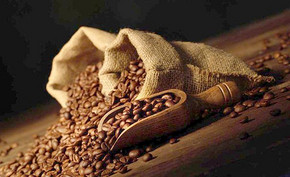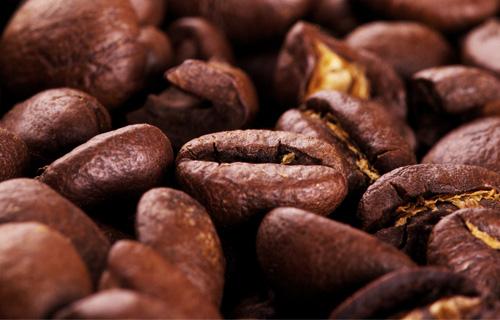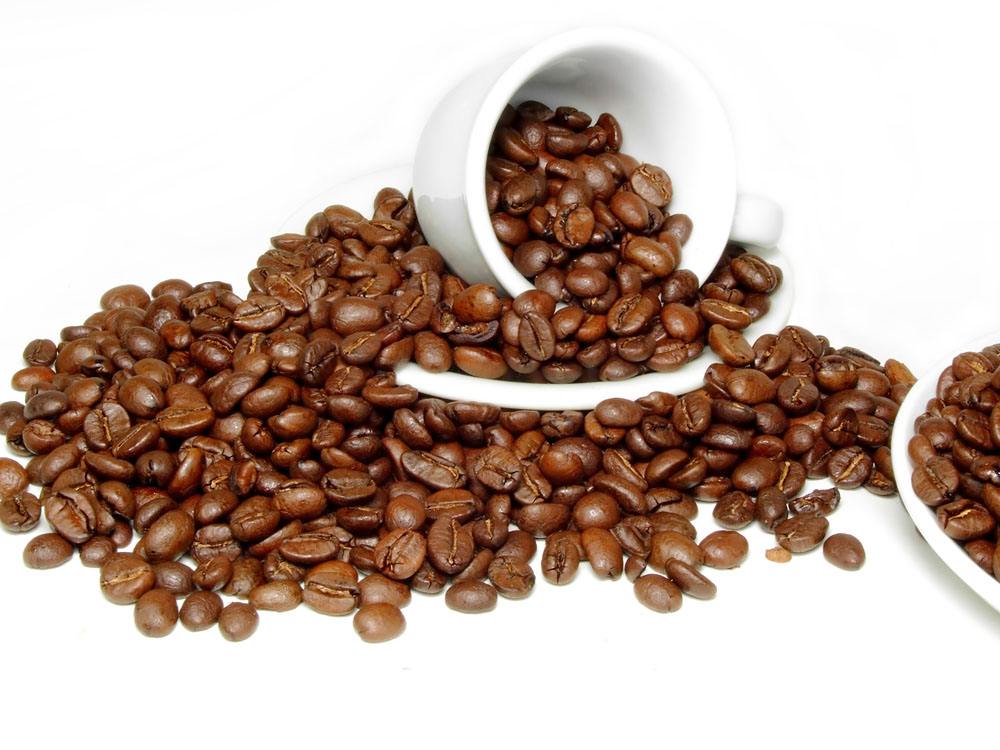Introduction to the coffee producing area of Yega Shifeiwo, Ethiopia
Follow the caf é (Wechat official account vdailycom) and found that Beautiful Cafe opened a small shop of its own.
Yega Xuefei is a small town in Ethiopia, 1700-2100 meters above sea level. It is located in the northwest of Sidamo Province. It is one of the highest coffee producing areas in Ethiopia and is synonymous with Ethiopian boutique coffee. Strictly speaking, Yega Xuefei is a by-product area of the Sidamo region of Ethiopia (Sidamo), which is independent because of its special flavor.
Yejia Xuefei, nearly 2,000 meters above sea level, is one of the highest coffee producing areas in the world. It has been a wetland since ancient times. "Yirga" means "settle down" and "Cheffe" means "wetland". Lake Turkana, Lake Abaya and Lake Chamo bring abundant water vapor. The Rift Valley, represented by Misty valley, is foggy all the year round, like spring all the year round, with a gentle breeze, cool and humid, and thousands of coffee trees thrive, giving birth to the unique and unpredictable atmosphere of Yejia Xuefei's unique fragrance of flowers and fruits.
European monastic academics opened up a local coffee growing industry, which was later run by coffee communities or cooperatives in villages around the town. There are no special plantations here, and coffee trees are naturally scattered in the forest and countryside. During the harvest season, the Ethiopian Coffee Trading Company goes to town to buy coffee beans collected by farmers.

In addition to the small town of Yega Xuefei, it also includes three by-product areas such as Wenago, Kochere and Gelena/Abaya around it.
1. Planting system and environment the mountain stream village in the Yega Xuefei producing area is cool and foggy, like spring all the year round, with a gentle breeze in summer, cool but not hot, rain but not damp, and no cold damage in winter, which is the best environment for planting Arabica. There are no large coffee plantations. Coffee farmers mix coffee with other crops, usually under banana trees, to form a unique landscape.
2. The traditional way of solarization in Ethiopia is rough and smelly, which has been criticized by people. In 1959, the South American water washing method was introduced into the Yega Xuefei producing area. Most producing areas generally adopt the water washing treatment, that is, after the coffee fruit is peeled, the pectin layer is removed after fermentation and washing, and then dried. Since 2006, some coffee processing plants in some producing areas have adopted the exquisite elevated shed sun drying method, which invests in high-intensity human labor, which isolates the coffee fruit from contact with the ground and prevents the miscellaneous smell of soil in the process of sunlight. create an unusually clean fruit flavor. After more than two weeks of sun exposure, dark brown coffee fruits are professionally stored, waiting for the whole flavor to ripen. Before sale, the sun-dried cherry pulp and sheepskin are removed, followed by the removal of unripe beans and overfermented beans, and strict control improves the quality of sun-dried beans.
3. Flavor and characteristics
Washed Yega Chuefei: it has a unique lemon flavor, refreshing jasmine flavor, as well as soft fruit acid and citrus flavor, fresh and bright taste.
Sun Yega Chuefei: with charming fruit acidity, clean fermented fruit sweet, elegant fruit wine, sweet finish.
4. The grading system of grade Ethiopian coffee is not based on the number of items, but on the proportion of defective beans in raw beans. Ethiopia launched the ECX boutique coffee trading grading system, and Q-Grader made the following grades through the evaluation of raw beans: washed Yega Xuefei is divided into Grade 1 and Grade 2, Sun Yega Xuefei is divided into Grade 1, Grade 3, Grade 4, Grade 5, and Grade 1 is the highest grade, that is, Yega Xuefei with the lowest defect rate and the best quality. This article is sorted out according to Han Huaizong's "Fine Coffee" and other contents of the Internet.
Name and introduction of Coffee Cooperative in Ethiopia
Sigiga Cooperative (1600-2500 m)
Production area: Gedeo-Kochere Kochel
Number of members: 1862
Land attribute: red brown soil
Certificate: Fair Trade Fair Trade, UTZ Sustainable cultivation, Organic Organic Coffee
Finchewan Cooperative (1450-2000 m)
Production area: Gedeo-Wenago vena fruit
Number of members: 1271
Land attribute: red brown soil
Certificate: Fair Trade Fair Trade, Organic Organic Coffee
Konga Conga Cooperative (1750-2300 m)
Production area: Gedeo- Yega Xuefei
Number of members: 1556
Land attribute: red brown soil
Certificate: Fair Trade Fair Trade, Organic Organic Coffee
Hafursa Cooperative (1750-2300 m)
Production area: Gedeo- Yega Xuefei
Number of members: 1975
Land attribute: red brown soil
Annual output of raw coffee beans: 798000 kg
Average farm size: up to 4 hectares with an annual yield of about 600 kg per hectare
The cooperative has a washing station.
Certificate: Fair Trade Fair Trade, Organic Organic Coffee
Resa Cooperative (1000-1400 m)
Production area: Gedeo-Wenago vena fruit
Number of members: 2719
Land attribute: red brown soil
Two sets of coffee processing equipment are available.
Certificate: Fair Trade Fair Trade, Organic Organic Coffee
Addis Katema Cooperative (1000-1400 m)
Production area: Gedeo-Wenago vena fruit
Number of members: 891
The cooperative has a washing station.
Land attribute: red brown soil
Certificate: Fair Trade Fair Trade, Organic Organic Coffee
Biloya Biloya Cooperative (1600-2500 m)
Production area: Gedeo-Kochere Kochel
Number of members: 1203
Land attribute: red brown soil
Provide two sets of coffee processing equipment
Certificate: Fair Trade Fair Trade, Organic Organic Coffee
Worka Waka Cooperative (1650-2700 m)
Production area: Gedeb
Number of members: 305
Land attribute: red brown soil
Annual output of raw coffee beans: 457000 kg
Average farm size: maximum 4 hectares, annual yield of about 699 kg per hectare
The cooperative has all the processing equipment.
Certificate: Fair Trade Fair Trade, Organic Organic Coffee
Koke Cook Cooperative (1750-2300 m)
Production area: Gedeo- Yega Xuefei
Number of members: 828
Land attribute: red brown soil
A set of processing equipment can be provided
Certificate: Fair Trade Fair Trade, UTZ Sustainable cultivation, Organic Organic Coffee
Hama Cooperative (1600-2500 m)
Production area: Gedeo-Kochere Kochel
Number of members: 1505
Land attribute: red brown soil
A set of processing equipment can be provided
Certificate: Fair Trade Fair Trade, Organic Organic Coffee
Chichu Cooperative (1410-2000 m)
Production area: Gedeo-Dila
Number of members: 1675
Land attribute: red brown soil
Average farm size: up to 4 hectares, with an annual yield of about 591 kg per hectare
A set of processing equipment can be provided
Certificate: Fair Trade Fair Trade, Organic Organic Coffee
Michile Cooperative (1410-2000 m)
Production area: Gedeo-Dila
Number of members: 1206
Land attribute: red brown soil
Average farm size: annual yield per hectare is about 592 kg
A set of processing equipment can be provided
Certificate: Fair Trade Fair Trade, UTZ Sustainable cultivation, Organic Organic Coffee
Hase Haro Cooperative (1450-2000 m)
Production area: Gedeo-Wenago vena fruit
Number of members: 1519
Land attribute: red brown soil
Average farm size: up to 4 hectares, with an annual yield of about 591 kg per hectare
A set of processing equipment can be provided
Important Notice :
前街咖啡 FrontStreet Coffee has moved to new addredd:
FrontStreet Coffee Address: 315,Donghua East Road,GuangZhou
Tel:020 38364473
- Prev

Arabica Coffee Bean Iron Pickup Bean Derived Variety Coffee Bean Type
Follow Coffee Review (Weixin Official Accounts vdailycom ) and discover a beautiful cafe to open your own shop Iron Pickup (Typica) Peru (Typica): nutty, milky chocolate, herbal-floral, pear-fruit, vanilla, caramel, apple-like, hon
- Next

Introduction to the washing of coffee beans by Isabee and Xuefei.
Following the Cafe Review (Wechat official account vdailycom) found that the Beautiful Cafe opened its own shop. The so-called Yejia Snow Flavor refers to strong aromas of jasmine and lemon, as well as the sweet aromas of peaches, almonds and tea. Tasting experience has only one sentence: coffee entrance, flowers in full bloom! Just like a flower touches the comfort of taste buds and olfactory cells in the nasal cavity. In addition to the fragrance of the flowers, the delicate mellow thickness (body)
Related
- Detailed explanation of Jadeite planting Land in Panamanian Jadeite Manor introduction to the grading system of Jadeite competitive bidding, Red bid, Green bid and Rose Summer
- Story of Coffee planting in Brenka region of Costa Rica Stonehenge Manor anaerobic heavy honey treatment of flavor mouth
- What's on the barrel of Blue Mountain Coffee beans?
- Can American coffee also pull flowers? How to use hot American style to pull out a good-looking pattern?
- Can you make a cold extract with coffee beans? What is the right proportion for cold-extracted coffee formula?
- Indonesian PWN Gold Mandrine Coffee Origin Features Flavor How to Chong? Mandolin coffee is American.
- A brief introduction to the flavor characteristics of Brazilian yellow bourbon coffee beans
- What is the effect of different water quality on the flavor of cold-extracted coffee? What kind of water is best for brewing coffee?
- Why do you think of Rose Summer whenever you mention Panamanian coffee?
- Introduction to the characteristics of authentic blue mountain coffee bean producing areas? What is the CIB Coffee Authority in Jamaica?

